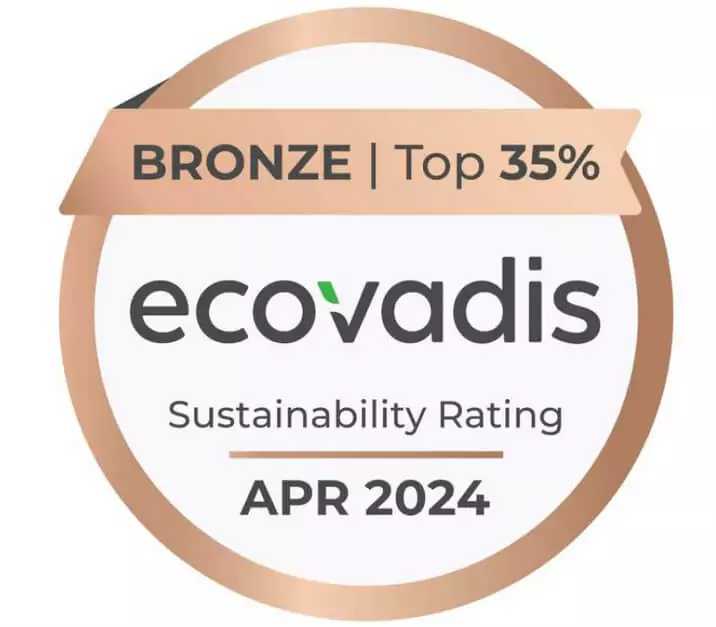Ultimate Guide to Understanding Lithium Battery Technology and Applications
In recent years, the demand for lithium batteries has surged dramatically, driven by the rise of
electric vehicles, renewable energy storage, and portable electronics. According to a report
from Statista, the global lithium-ion battery market is expected to reach over $100 billion
by 2025, reflecting a compound annual growth rate (CAGR) of approximately
20% from 2020 onward. This explosive growth not only underscores the pivotal role
lithium battery technology plays in modern energy solutions but also highlights the need for
consumers and industry professionals alike to understand its intricacies. With advancements in
battery chemistry, efficiency, and safety, comprehending how lithium batteries function and
their diverse applications is essential for navigating the future landscape of energy consumption and sustainability.
This ultimate guide aims to provide a comprehensive understanding of lithium battery technology, empowering readers to make informed
decisions in this dynamic sector.

Key Components of Lithium Battery Technology Explained
Lithium battery technology has rapidly advanced, becoming the backbone of modern energy storage solutions. At the core of this technology are several key components that work together to ensure efficiency, safety, and longevity. The anode, typically made from graphite, plays a crucial role in the charging process by aiding the movement of lithium ions. The cathode, which can be composed of materials like lithium cobalt oxide or lithium iron phosphate, determines the battery's energy density and overall performance. Together, these components dictate how well a lithium battery will perform under various conditions.

Another vital component is the electrolyte, which serves as the medium for lithium ion transport between the anode and cathode. Electrolytes can be liquid, gel, or solid, each type having its pros and cons in terms of conductivity and stability. Additionally, the separator, often a porous polymer, is critical as it prevents short circuits while allowing lithium ions to flow freely.
Understanding these key components is essential to grasp how advancements in lithium battery technology are not only enhancing performance but also paving the way for new applications in electric vehicles, renewable energy storage, and portable electronics.
Types of Lithium Batteries and Their Unique Applications
Lithium batteries have become integral to modern technology, with various types tailored to distinct applications. The most common types include Lithium-Ion (Li-ion), Lithium Polymer (LiPo), and Lithium Iron Phosphate (LiFePO4). According to a report by Research and Markets, the global lithium-ion battery market is projected to reach $105.8 billion by 2025, driven by the surging demand in consumer electronics, electric vehicles (EVs), and renewable energy systems.
Li-ion batteries dominate the portable electronics market due to their high energy density and lightweight properties. They are widely used in smartphones, laptops, and tablets. Meanwhile, Lithium Polymer batteries, recognized for their flexible form factor and safety features, are often found in drones and wearable devices. Recent advancements have also spotlighted Lithium Iron Phosphate batteries, prized for their thermal stability and long-cycle life, making them suitable for applications in electric vehicles and stationary energy storage. With the global EV market expected to grow to 27 million units by 2030, as per the International Energy Agency, the role of specific lithium battery types in shaping sustainable transportation solutions is becoming increasingly crucial.
Types of Lithium Batteries and Their Unique Applications
Understanding the Charging and Discharging Process of Lithium Batteries
Lithium batteries have revolutionized the energy storage landscape, prominently powering everything from smartphones to electric vehicles. A critical aspect of their efficiency lies in understanding the charging and discharging process. During charging, lithium ions move from the cathode to the anode, embedding themselves in the graphite structure, which allows the battery to store electrical energy. According to a report by Allied Market Research, the global lithium-ion battery market is projected to reach $129.3 billion by 2027, highlighting the increasing reliance on these batteries and the importance of optimizing their performance.
During discharging, the process reverses; lithium ions relocate back to the cathode while releasing the stored energy in the form of electricity. This movement is not merely a physical transfer of ions but is accompanied by a complex interplay of electromotive forces that dictate the battery's voltage and capacity. A study published in the Journal of Power Sources notes that proper management of charge cycles can increase the lifespan of lithium batteries by up to 50%, underscoring the importance of understanding these processes for both consumer and industrial applications. As the demand for more efficient energy solutions continues to grow, refining the charging and discharging protocols will be crucial in enhancing the overall performance of lithium batteries.
Best Practices for Maintaining Lithium Batteries for Longevity
 Maintaining lithium batteries is crucial for ensuring their longevity and optimal performance. One of the best practices is to avoid extreme temperatures, as both heat and cold can negatively impact battery health. Storing and using batteries in a moderate temperature range, ideally between 20°C and 25°C (68°F to 77°F), helps to preserve their capacity and lifespan. Additionally, it's important to keep the battery away from direct sunlight or heat sources, as excessive warmth can accelerate degradation.
Maintaining lithium batteries is crucial for ensuring their longevity and optimal performance. One of the best practices is to avoid extreme temperatures, as both heat and cold can negatively impact battery health. Storing and using batteries in a moderate temperature range, ideally between 20°C and 25°C (68°F to 77°F), helps to preserve their capacity and lifespan. Additionally, it's important to keep the battery away from direct sunlight or heat sources, as excessive warmth can accelerate degradation.
Another key aspect of battery maintenance involves regular charging habits. It is advisable to avoid completely draining lithium batteries before recharging, as deep discharges can lead to irreversible capacity loss. Instead, aim to charge the battery when it reaches around 20-30% capacity. Utilizing the appropriate chargers and avoiding overcharging by disconnecting once fully charged can also prevent stress on the battery cells. Furthermore, storing batteries at around 50% charge when not in use can help maintain their health over prolonged periods. By following these best practices, users can significantly extend the life of their lithium batteries and enhance their performance, making them more reliable for various applications.
Innovative Trends in Lithium Battery Technology for the Future
The landscape of lithium battery technology is continuously evolving, driven by innovations that promise to revolutionize energy storage and consumption. One of the most exciting trends is the development of solid-state batteries, which replace the liquid electrolyte with a solid material. This advancement offers significant advantages, including higher energy density, improved safety, and a longer lifespan, making them an attractive option for electric vehicles and portable electronics. Companies and research institutions are racing to scale up production and address the challenges of manufacturing solid-state batteries economically.
Another intriguing trend is the integration of artificial intelligence (AI) into battery management systems. By leveraging AI, manufacturers can optimize the charging cycles and improve the overall efficiency of lithium batteries. Predictive algorithms can analyze usage patterns in real-time, allowing for smarter energy management and extending battery life. As these intelligent systems become more prevalent, they will enhance not just consumer electronics but also renewable energy applications, ensuring that solar and wind energy can be stored and utilized more effectively. As we move toward a sustainable future, these innovative trends signify a pivotal shift in how we harness and manage energy through lithium battery technology.
Ultimate Guide to Understanding Lithium Battery Technology and Applications - Innovative Trends in Lithium Battery Technology for the Future
| Parameter |
Description |
Current Trends |
Future Applications |
| Energy Density |
The amount of energy stored per unit of weight |
Improving battery materials for higher capacity |
Electric vehicles and portable electronics |
| Charge Cycle Life |
Number of complete charge and discharge cycles a battery can handle |
Enhanced cycling stability through new materials |
Grid storage and renewable energy applications |
| Charging Speed |
Rate at which a battery can be charged |
Development of fast charging technologies |
Public transport and rapid charging solutions |
| Safety Features |
Mechanisms to prevent overheating and fires |
Integration of smart battery management systems |
Consumer electronics and automotive applications |
| Environmental Impact |
Assessment of the ecological footprint of lithium batteries |
Recycling and sustainability initiatives |
Second-life applications and circular economy projects |




 Maintaining lithium batteries is crucial for ensuring their longevity and optimal performance. One of the best practices is to avoid extreme temperatures, as both heat and cold can negatively impact battery health. Storing and using batteries in a moderate temperature range, ideally between 20°C and 25°C (68°F to 77°F), helps to preserve their capacity and lifespan. Additionally, it's important to keep the battery away from direct sunlight or heat sources, as excessive warmth can accelerate degradation.
Maintaining lithium batteries is crucial for ensuring their longevity and optimal performance. One of the best practices is to avoid extreme temperatures, as both heat and cold can negatively impact battery health. Storing and using batteries in a moderate temperature range, ideally between 20°C and 25°C (68°F to 77°F), helps to preserve their capacity and lifespan. Additionally, it's important to keep the battery away from direct sunlight or heat sources, as excessive warmth can accelerate degradation.







